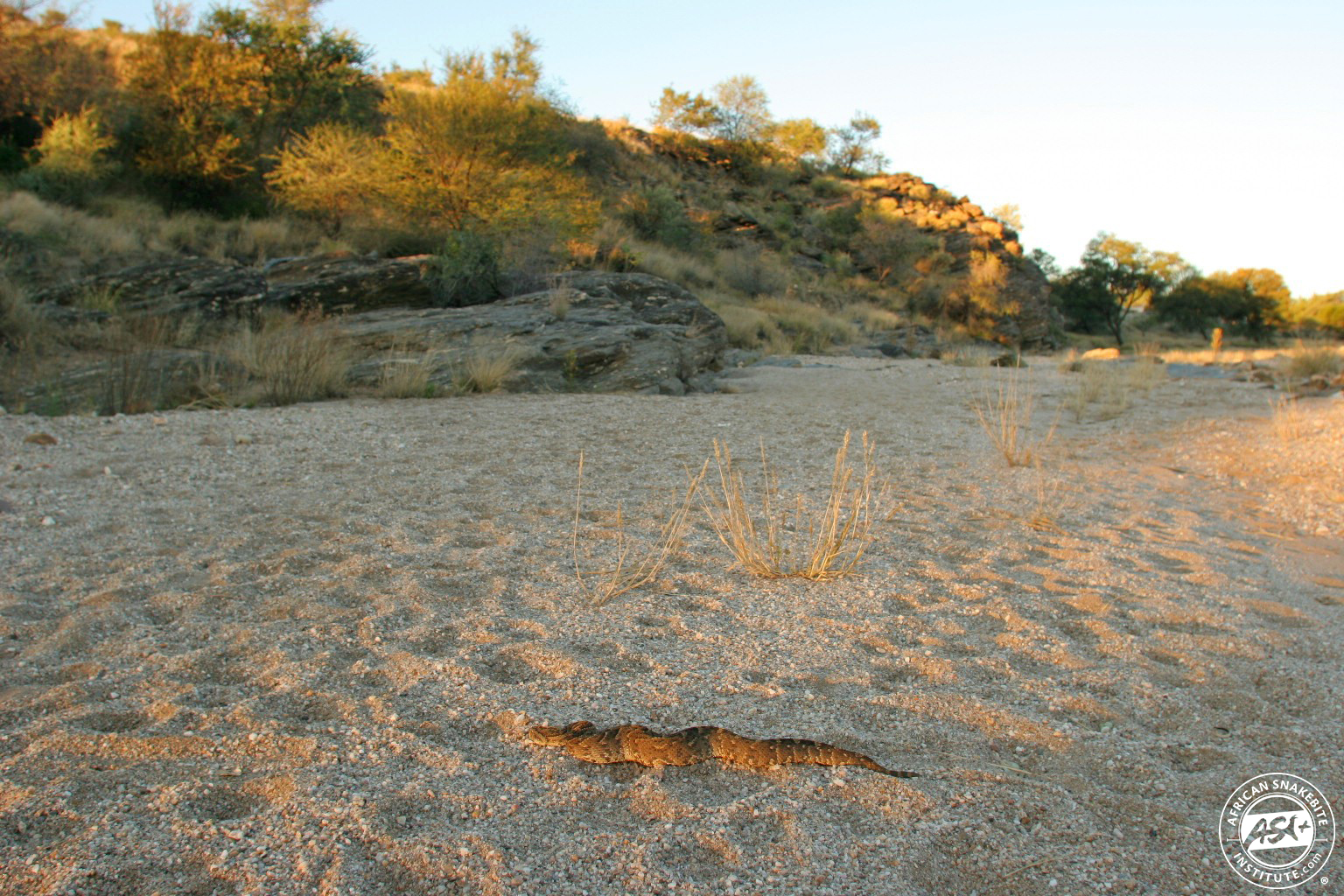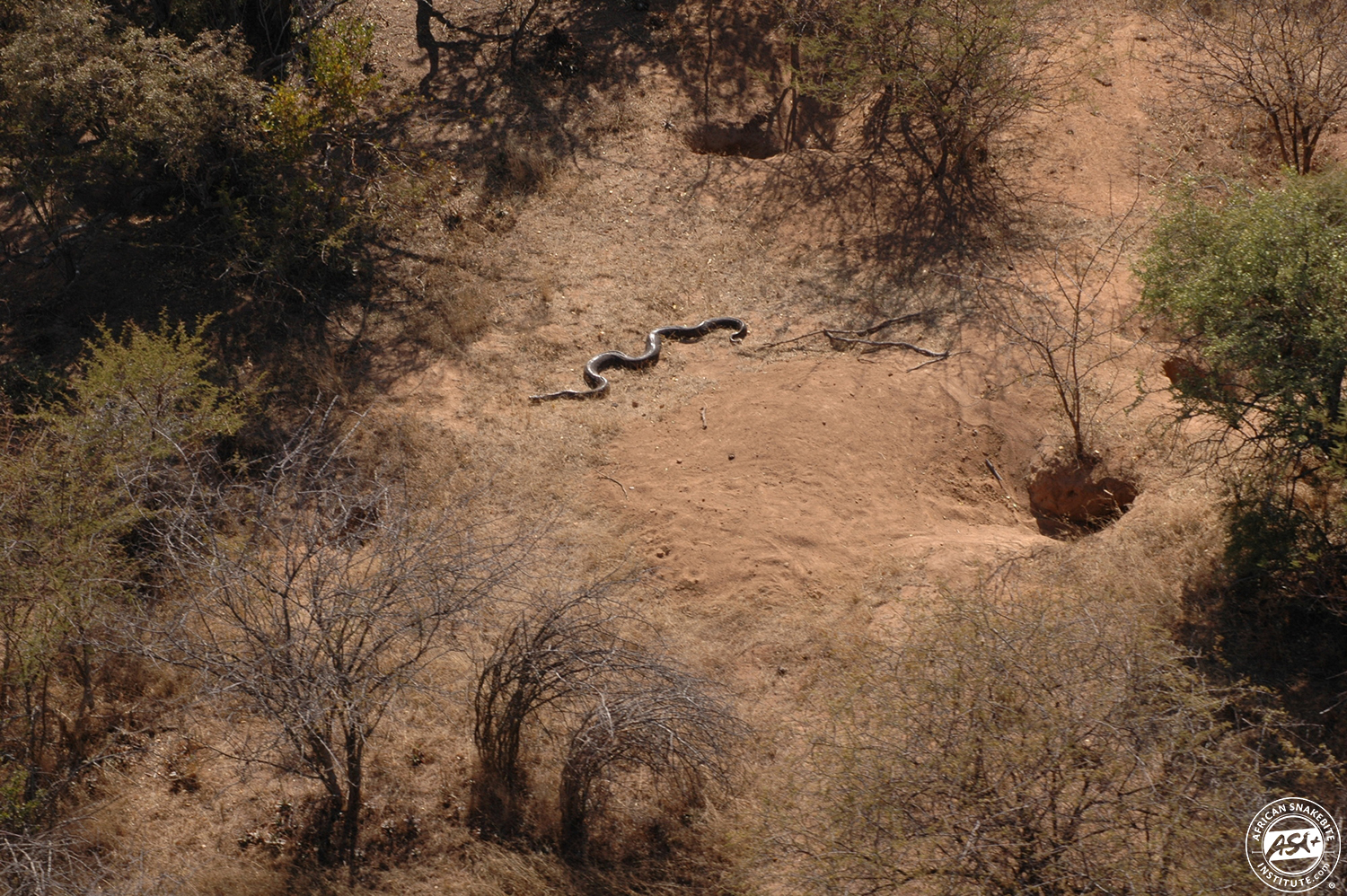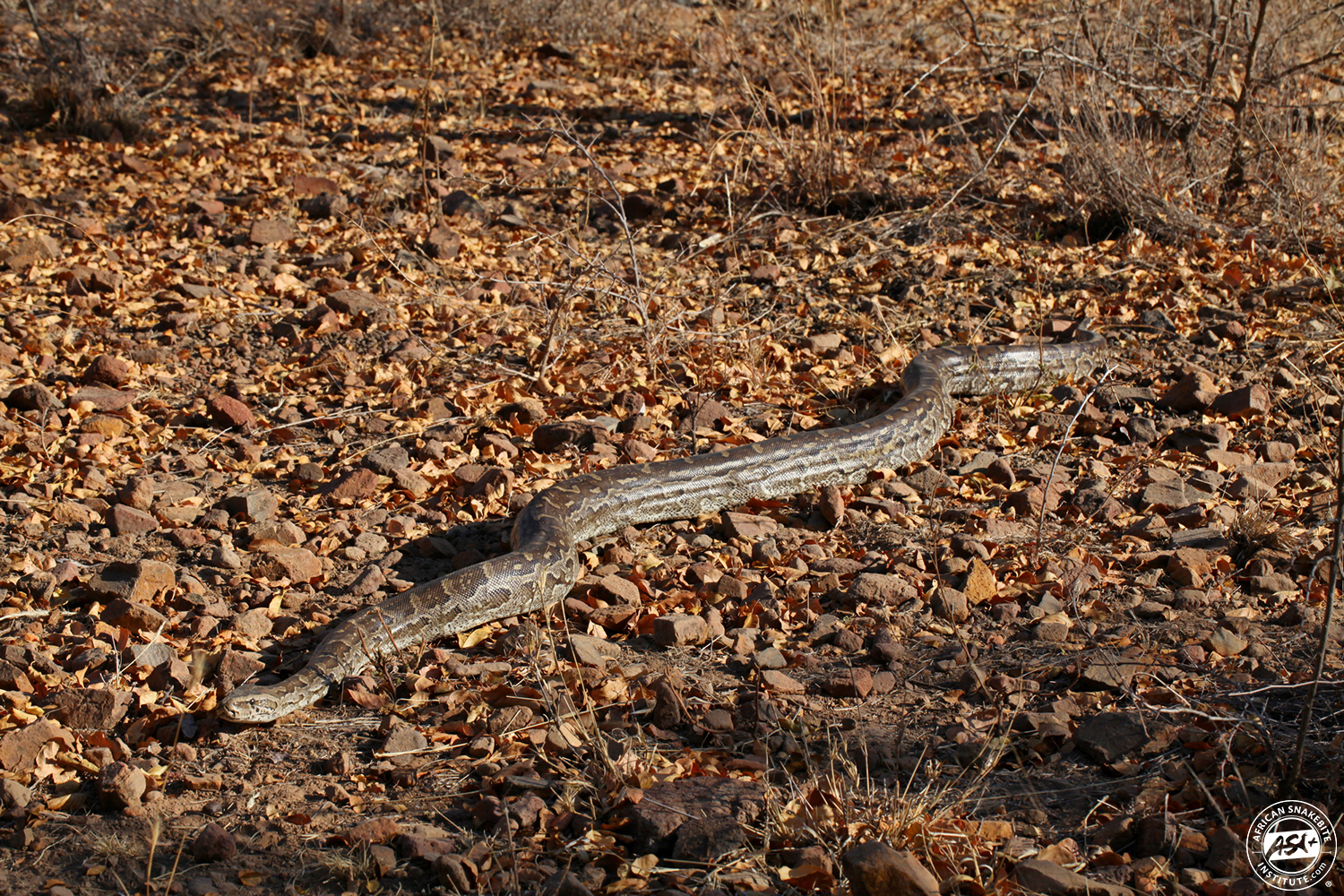|
We are often asked whether snakes have a specific territory. The word territory is perhaps not the correct term as it infers that snake would protect this area to keep other snakes out of it. Snakes do not live in an area and protect that area from other snakes, but they often have a permanent home range, and it is quite common for a mamba or cobra to live down a termite hole for the most part of their adult lives – about twenty years. The late Dr Tony Phelps observed a number of Cape Cobras in De Hoop reserve living down their respective holes for many years.
Although snakes do not move around in pairs, we have observed pairs of Black Mambas near Hoedspruit sharing the same hole, basking near the hole in the mornings but then moving off on their own to hunt. Another social media post a number of years back, showed two Boomslang sharing a hole in a tree trunk with a young Black Mamba.
Finding a suitable home takes a great deal of time as any area will only have limited suitable habitat for a certain number of snakes of one species. Young Puff Adders move around a great deal and account for the majority of Puff Adder bites, as people accidentally stand on them while on the move. Each snake seeks a suitable hiding spot where it is well camouflaged, where food is available and where it has suitable basking sites. Bear in mind that the more the snake moves around, the more it is exposed to predators. Once a suitable spot is found, the snake may remain in that spot for months or even years to follow. Dr Graham Alexander and his team from the Alexander Herp Lab at Wits University did extensive research on Puff Adder behaviour in Dinokeng Game Reserve and some individuals were observed hiding under a small shrub for several weeks or even months at a time. These snakes would spend most of the year in an area half the size of a tennis court.
|
 |
|
Puff Adders will spend most of their time concealed under a bush or in leaf litter and may live in an area the size of half a tennis court.
|
|
|
|
Our best selling Snake Hook - the 1.2m ASI Collapsible Snake Hook is made from industrial aluminium and tested to lift up to 4 kg. Has a stainless steel hook.
Length is 72 cm when collapsed and 123 cm when extended.
Price: R495.00
|
|
|
| Order here |
|
|
|
Pythons are no different and the team found that female pythons would often return to the same aardvark hole year after year to lay their eggs. So, what would happen to a Puff Adder that is well established in an area in the event that it is captured and relocated elsewhere? We do not have much data on the subject, but such a snake will have to re-establish itself in the new territory – which puts it at great risk of predation as it moves around.
|
 |
|
A large female Southern African Python basking outside a hole she has chosen to lay her eggs in. Image Graham Alexander.
|
|
|
|
People often capture a snake in their house or garden and release it some distance away and claim that the snake returns a few days later. Whether it is the same snake that was removed can be questioned but the fact that snakes have excellent navigational abilities is evident. The Alexander Herp Lab team tracked a male Puff Adder in the breeding season in Dinokeng: it moved close on 20 km in search of females and returned to the exact spot where it started.
An invasive Burmese Python in southern Florida was captured and released elsewhere and navigated around 30 km back to where it was captured.
When a snake lives in a certain area and is well established, it gets to know the area. It knows every escape hole, where to bask in the morning, and where to find food and water. Some species, such as the Puff Adder, may have a small area that it lives in, while others such as the Southern African Python, require far more space and may need several hectares.
|
 |
|
Southern African Pythons have a large home range and are known to move great distances.
|
|
|
|
New to our shelves - A Field Guide to the Snakes and other Reptiles of KwaZulu-Natal by Tyrone Ping.
KwaZulu Natal is home to over 170 species of snakes and other reptiles, from the iconic Black Mamba, to the Nile Crocodile and several of the mysterious dwarf chameleon species.With over 300 colour photographs, concise species accounts and distribution maps, this field guide serves as the first of its kind for Snakes and Other Reptiles of KwaZulu Natal.
Price R400.00 each
|
|
|
| Order here |
|
|
|
Rescuing snakes has become quite an industry in South Africa with the ASI App (ASI Snakes (http://bit.ly/snakebiteapp)) listing around 700 snake removers country-wide. Whenever people see a snake in their house or garden, they call a snake remover and the snake is safely captured and released a few kilometers away, in suitable habitat and away from people. The recommendation is usually no further than 10 km, as releasing Western Cape Cape Cobras in the Northwest Province for instance, may interfere with genetic purity or introduce diseases. While we fully support the relocation of snakes and discourage people from killing them, we have no idea how many of these relocated snakes survive. Such a snake will have to spend a great deal of time and energy finding a suitable spot in its new environment and the risk of predation is high. At this stage we have no data on such survivals, but we also lack data on predation in the wild. In the Alexander Herp Lab Dinokeng study, a large number of their Puff Adders that were fitted with radio transmitters were eaten by Snouted Cobras and snake eagles.
We fully support problem snakes being captured and released close by and deplore the senseless killing of snakes that are spotted in or near residences.
|
|
|
|
ASI-TE Custom Utility Knife
The newest addition to our extensive list of products are these beautiful custom made TE Utility Knives.
With an ultra sharp N690 stainless steel blade and G10 grip - these knives are handcrafted with the finest materials.
Price R1495.00
|
|
|
| Order here |
|
|
|
|
|
|